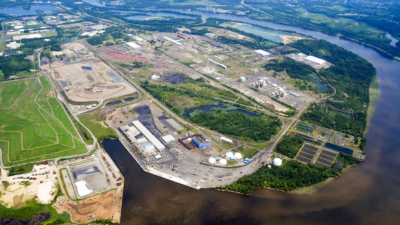Our latest research report — Q4 2019 Industrial Market Outlook — presents key trends and statistics for the U.S. industrial market. The U.S. industrial market remains on firm ground with record low vacancies and high asking rents across most markets. While unprecedented levels of new construction signify confidence in the market, 2020 could see vacancy rise further from the cyclical low of late 2018. Nevertheless, the future of e-commerce has the industrial real estate market on solid footing entering 2020 and should continue to create demand for big-box buildings, final-mile distribution centers, flex space, and in certain parts of the country, manufacturing facilities.
Featured Highlights
- The U.S. industrial vacancy rate closed out 2019 at 5.1% — one of the lowest rates on record, but an uptick of nine basis points (BPS) over the prior quarter and 14 BPS higher than year-end 2018.
- Driven by low vacancy and strong demand, development activity remained elevated, with 328.9 million square feet under construction at the close of 2019 — down slightly from an all-time record of 337.8 million square feet set in the prior quarter.
- Growing consumer appetite to purchase goods online continues to drive industrial real estate demand. Occupiers are expanding warehouse locations to service online consumers and cut transportation costs.
- Tight markets and the delivery of new, higher-quality Class A space drove average asking rents to a record $6.09 per square foot per year for warehouse/distribution space in Q4 2019.
- Growing transportation costs remain an ongoing and key concern for occupiers. While rent growth may moderate in 2020, expect the trend of companies leasing more warehouse space to lower average haul lengths and cut transportation costs to continue.
- Coming off a strong second half of 2019, U.S. industrial investment sales finished 2019 ahead of last year’s pace, with total transactions of $112.1 billion — a 14.1% increase over 2018 and at the highest annual level since 2001.
- The overall outlook for industrial real estate remains optimistic with further positive absorption, low vacancy rates and upward pressure on asking rental rates. However, there are some headwinds picking up. The greatest threats to industrial demand look to be slowing domestic economic momentum and the continued uncertainty caused by trade tensions.
For more details on the latest office trends, download the U.S. Industrial Market Outlook. Be sure to also explore the Q4 2019 update to Your Market Insights Hub | U.S. Industrial, which presents the latest data and forecasts in a detailed, interactive format – including a new metro map feature.

 Colliers Insights Team
Colliers Insights Team
 Craig Hurvitz
Craig Hurvitz
 Lauren Pace
Lauren Pace Ronna Larsen
Ronna Larsen
 Tom Golarz
Tom Golarz Michael Golarz
Michael Golarz